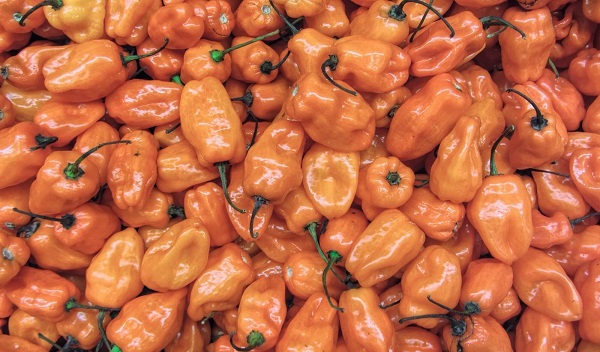
Alasa, meko hwam from Togo?
“Meko hwam, meko hwam,” a trader cried out, advertising her green habanero peppers.
I cautioned my sister, then moving towards her to buy, “Be careful, big peppers like those are grown with fertilisers and are usually infested with worms!”
Advertisement
“Ah! These peppers are imported from Togo, they are not local!” she exclaimed.
Surprised, I went near and saw fresh harbanero peppers, fleshy and aromatic.
I wondered, “Have we gotten to this, importing peppers from Togo?
Apart from peppers, Ghana is importing African Star Apple, or alasa, also from Togo; with those from our neighbours fleshier, bigger and tastier.
Tomatoes from Burkina Faso have a longer shelf life, also fleshier than those grown locally.
And, how is it that locally grown peppers with fertilisers are worm infested?
Burkina Faso
In Burkina Faso, in the late 1990s, I was pleasantly surprised by the fact of the abundance of vegetables on offer by this landlocked and dusty country.
Enter any café (which were basically small kiosks selling coffee), and one would get a cup of coffee for 75 cents; with milk it was 100 cents; and with a baguette, 150 cent.
What amazed me was the bowl of salad displayed on the coffee table, which was free and replenished regularly for all customers who wished for some with their coffee and bread.
Before that visit, I considered vegetables, that is, those used for salads, expensive and elite treats.
Salads were not common or readily available in our markets, or sold as part of the accompaniments to street foods like waakye, as we have it now.
Even with the abundance of vegetables on the market now, some vegetables, like carrots, are imported from Togo, and they are bigger than those grown locally.
Lesson
Burkina Faso taught me that in a dusty and dry land, men and women can eat like kings and queens, with the right policies and commitment to ensuring the progress of one’s country.
Visiting a family living near the Bagre Dam, there was a feast of fresh vegetables, guinea fowl and a variety of local delicacies.
Well irrigated fields close to the dam resulted in such rich produce of vegetables and other staples.
Now the Bagre Dam is hydro-agricultural and hydro-electrical in the province of Boulgou in Burkina Faso.
It is on the Nakanbé River in that province, which is about 30km from the Ghanaian border.
The Dam is multi-purposed to provide hydro-electric power, power the agricultural sector in the province, irrigate lands and ensure the most efficient use of water for the people in the area.
How?
How has Burkina Faso, a country smaller than Ghana, and land-locked by it, managed to do this for a province?
How has a dusty and dry country ensured all year round vegetables for its people?
Sometimes, I wonder about Ghana, and about those in charge of managing the country.
I wonder about what governing Ghana is all about…
Is it not to manage resources in such a way and manner that all may benefit?
Is managing Ghana not about taking the country’s weaknesses and changing that sorry tale into success, like Burkina Faso has done with just one province?
Do our scientific and research institutions not have improved varieties of crops for Ghanaians to ‘live good’ and not import?
What really is the nature of Ghana’s ailment?
Writer’s E-mail: [email protected]



